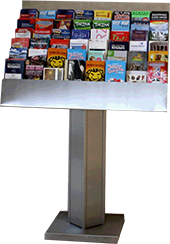Cape Arkona - the northern tip of the island of Rügen. On the peninsula of Wittow with picturesque steep coast there are several landmarks and sights of the largest German island. The northern tip has to offer no less than two lighthouses, a marine directional tower, two military bunkers and the historical excavations of the Slavic Jaromarsburg with an art site of the indigenous people. Numerous restaurants and souvenir stores complete the offer for a successful vacation day.
Cape Arkona is a popular destination for excursions and inspires young and old alike. The extraordinary climate also contributes to this; for example, the German Weather Service recorded the longest sunshine duration of all operating weather stations here in many a year.
It is also worth taking a detour to the tranquil fishing village of Vitt. A stroll through the picturesque village will immediately give you a sense of its charming flair. Today, there is only one fishing family in Vitt, which goes out on the water almost every day to catch fish in the Tromper Wiek. The quaint harbor offers a beautiful view of Cape Arkona. Freshly caught fish is also smoked and offered here. Those who prefer to enjoy maritime culinary delights in a less rustic ambience will find a traditional restaurant in the center of the village.

selected Highlight
Proven content with highest relevance and topicality
There are two lighthouses to admire at the northern tip of Rügen. The smaller of the two is the classicist Schinkel Tower in brick construction and square base shape. Built according to designs by Karl Friedrich Schinkel and dating from the early 19th century, it is the second oldest on the German Baltic coast after the lighthouse in Travemünde. It was put into operation in 1828 and has a fire height of 60 meters. The interiors were used as service and storage rooms until the tower was decommissioned in 1905. Today, the interiors house a museum with an exhibition on beacons and sea rescue, as well as a small branch of the registry office for marriages. The viewing platform offers a beautiful view of the Wittow peninsula, the area monument at Cape Arkona and the vastness of the Baltic Sea.
The fame of the builder of the old lighthouse as the head of the Prussian Chief Building Department led to the fact that it was not demolished, but the new lighthouse was built right next to it. Thus, the unique ensemble of two lighthouses at Cape Arkona was created.
The construction of the new lighthouse goes back to plans for an electric supply of the beacon from 1894. As a replacement for the old lighthouse, this was put into operation in 1905. The flashes from the two special incandescent lamps are transmitted every 17.1 seconds and are visible up to 24 nautical miles away.
The sounding tower at Cape Arkona once served the Reichsmarine as a radio direction finding station, which was to enable the observation of radio traffic on the Baltic Sea. It is located directly next to the Jaromarsburg and within sight of the two lighthouses. After the Second World War at the latest, the technical equipment at the direction finding tower was removed and the tower degenerated into a ruin.
In 1996, the tower was extensively renovated and the observation platform at a height of 20 meters was opened to the public. Protected by a glass dome, it can be accessed even in bad weather conditions. In good weather, the view even extends as far as the Danish island of Møn. The interior of the bearing tower can be visited. Among other things, fine handicrafts and alpaca textiles are offered here.
The smaller of the two bunkers is commonly referred to as the Arkona Bunker. It dates back to Wehrmacht times and was still used by the GDR regime. Today it serves as a documentation center for the history of Cape Arkona and portrays its history from Slavic times to the here and now.
The larger naval command bunker dates from the second half of the last century and served as a command post for the People's Navy of the United Baltic Fleet until the day of German reunification on October 3, 1990. After that, the facility was decommissioned and today houses an exhibition on the bunker at that time as well as a photo series on the Volksmarine.
Another important monument on Cape Arkona are the excavations of the remains of the Slavic Jaromarsburg. It dates back to the 9th-12th centuries and was a place of worship of the Ranen, a Slavic tribe. Located at the extreme tip of the cape, it was protected from three sides by the cliff, as well as from the land side by a 25 meter high rampart. Inside the rampart there was a temple dedicated to the deity Swantewit.
In the course of Christianization during the 12th century and the conquest of the castle complex by the Danish King Waldemar I, the temple complex was wantonly destroyed. Its remains are a significant testimony of Slavic cultural history on Rügen and in the entire Baltic Sea region. Large parts of the castle have fallen into the sea in recent centuries, which is why almost only the castle rampart is still visible. Due to the danger, this is not to be entered!
Pick up this flyer at the MPM brochure stand in the hotel lobby or contact reception.
